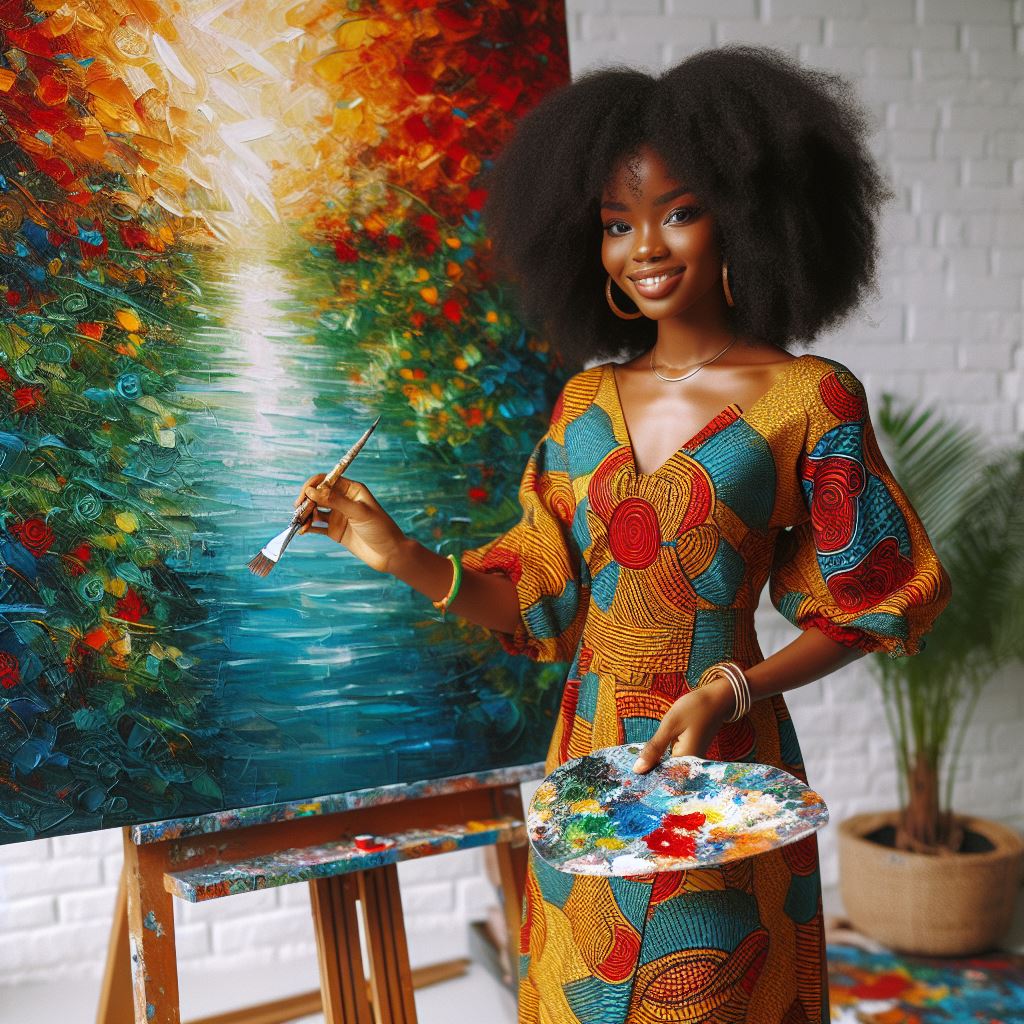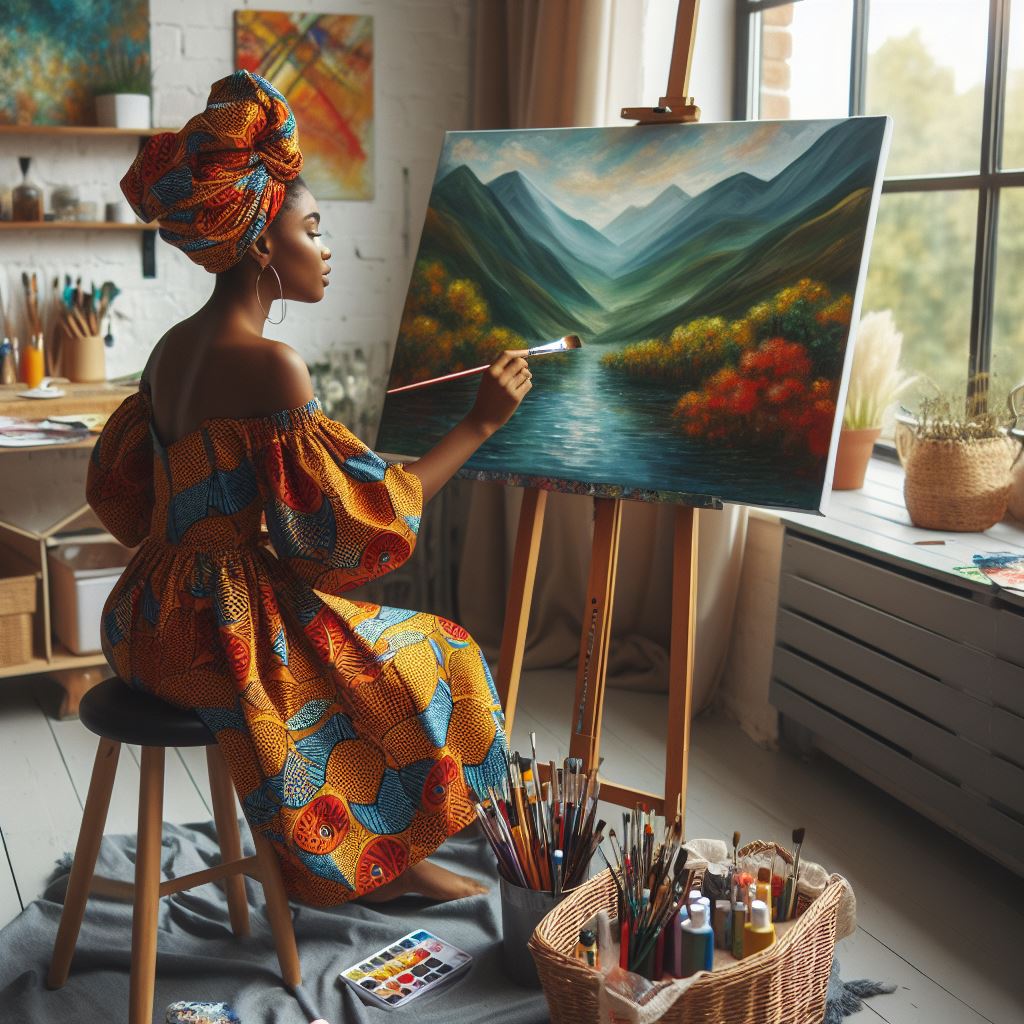Introduction
In recent years, there has been a notable shift towards eco-friendly art practices, driven by increasing environmental awareness and a growing recognition of the impact of human activities on the planet.
This paradigm shift has prompted artists and industry stakeholders to reconsider traditional approaches to art-making and embrace more sustainable alternatives.
The importance of incorporating sustainability in the art industry cannot be overstated.
As one of the most influential and culturally significant sectors, the art industry has a responsibility to minimize its environmental footprint and contribute to global efforts towards sustainability.
By adopting eco-friendly materials, reducing waste, and implementing environmentally-conscious practices, artists and art institutions can play a significant role in mitigating environmental degradation and promoting a more sustainable future.
In this blog section, we will explore the concept of eco-friendly art practices in more detail, examining the importance of sustainability in the art industry and highlighting the growing global trend towards eco-friendly art.
Through this exploration, we aim to inspire artists, art enthusiasts, and industry stakeholders to embrace sustainability and contribute to a more environmentally-conscious art world.
Current State of Art Practices in Nigeria
The traditional art techniques used in Nigeria
Nigeria boasts a rich tapestry of traditional art techniques, deeply rooted in its diverse cultural heritage.
From intricate beadwork to vibrant textile designs, these techniques have been passed down through generations.
Beadwork, for instance, is a hallmark of Nigerian artistry, with artisans skillfully crafting intricate patterns and designs using colorful beads.
Additionally, textile art in Nigeria encompasses a wide range of techniques, including weaving, tie-dyeing, and embroidery.
These traditional methods not only showcase the artistic prowess of Nigerian artisans but also reflect the country’s cultural diversity and heritage.
The impact of these practices on the environment
However, the impact of these practices on the environment is often overlooked.
Traditional methods may involve the use of non-sustainable materials or harmful chemicals, contributing to environmental degradation.
For example, some dyeing techniques may utilize synthetic dyes that contain toxic substances harmful to ecosystems.
Additionally, the extraction of natural resources for art materials can lead to habitat destruction and biodiversity loss.
Despite their cultural significance, these practices can have negative consequences for the environment, underscoring the need for sustainable alternatives.
The lack of awareness about eco-friendly art practices in the country
Despite these challenges, there is a lack of awareness about eco-friendly art practices in Nigeria.
Many artists and artisans may not be aware of the environmental impact of their techniques.
Furthermore, there is limited access to information and resources on sustainable art practices.
As a result, the traditional art sector in Nigeria continues to operate without considering its environmental footprint.
However, there is hope for change as awareness grows and initiatives promoting eco-friendly art practices emerge.
By incorporating sustainable materials and techniques, Nigerian artists can minimize their impact on the environment and contribute to a more sustainable future.
Read: Introduction to African and Asian Studies in Nigeria
Eco-friendly art techniques
Various eco-friendly art techniques such as using recycled materials, natural dyes, and sustainable practices
In response to environmental concerns, artists in Nigeria are increasingly turning to eco-friendly art techniques.
These techniques prioritize sustainability by utilizing recycled materials, natural dyes sourced from plants, and adopting sustainable practices.
For example, artists may repurpose discarded objects such as plastic bottles, cardboard, or scrap metal to create innovative artworks.
Additionally, natural dyes extracted from plants like indigo, hibiscus, or onion skins offer vibrant colors without harmful chemicals.
Moreover, sustainable practices such as minimizing waste, conserving energy, and reducing carbon footprint are integral to eco-friendly art creation in Nigeria.
Examples of artists in Nigeria who are already practicing eco-friendly art
Several artists in Nigeria have embraced eco-friendly art practices as a means of expressing their creativity while promoting environmental sustainability.
For instance, renowned sculptor El Anatsui is celebrated for his monumental tapestries crafted from discarded aluminum bottle caps and copper wire.
His transformative artworks not only highlight the beauty of recycled materials but also draw attention to environmental issues such as consumerism and waste.
Similarly, textile artist Nike Davies-Okundaye incorporates natural dyes sourced from plants into her intricate fabric designs, championing eco-friendly practices in traditional Nigerian textile art.
The benefits of using eco-friendly materials in art creation
The benefits of using eco-friendly materials in art creation extend beyond environmental conservation to encompass artistic innovation and social responsibility.
Eco-friendly art techniques allow artists to reduce their environmental impact while unleashing their creativity.
By repurposing discarded materials, artists contribute to waste reduction efforts and promote recycling awareness.
Additionally, natural dyes offer a sustainable alternative to synthetic pigments, resulting in artworks that are both visually striking and environmentally conscious.
Moreover, practicing eco-friendly art fosters a sense of responsibility towards the planet and inspires viewers to rethink their consumption habits.
Overall, embracing eco-friendly materials in art creation not only benefits the environment but also enriches the artistic process and promotes a culture of sustainability in Nigeria’s art community.
Read: Famous Nigerian Alumni of Communication Arts Programs
Challenges faced by artists in Nigeria
Talk about the challenges artists face in adopting eco-friendly practices, such as limited access to sustainable materials and resources
Despite the growing interest in eco-friendly art practices, Nigerian artists encounter various challenges in their adoption.
One major hurdle is the limited availability of sustainable materials and resources.
While recycled materials and natural dyes offer eco-friendly alternatives, accessing them can be challenging in Nigeria.
Artists may struggle to find reliable suppliers or affordable options, hindering their ability to incorporate eco-friendly practices into their work.
Additionally, limited awareness and education about sustainable art techniques further compound these challenges, making it difficult for artists to make informed decisions about their materials and processes.
The economic constraints of implementing eco-friendly art practices in Nigeria
Moreover, economic constraints pose significant barriers to implementing eco-friendly art practices in Nigeria.
Sustainable materials and eco-friendly processes may require higher upfront costs compared to conventional art supplies.
For artists operating on tight budgets, investing in eco-friendly materials may not be financially feasible, especially if they perceive it as a risky or uncertain investment.
Additionally, the lack of market demand for eco-friendly art products and the perceived value of traditional art materials further exacerbate economic challenges, deterring artists from adopting sustainable practices.
The need for collaboration and support from government and stakeholders to promote sustainable art practices
Addressing these challenges requires collaborative efforts from government, stakeholders, and the art community.
Governments can play a crucial role in promoting sustainable art practices by implementing policies that support eco-friendly initiatives, such as providing incentives for artists to adopt sustainable practices or investing in infrastructure for recycling and waste management.
Moreover, collaboration between artists, art institutions, and environmental organizations can help raise awareness about eco-friendly art practices and provide resources and support for artists interested in making the transition.
By working together, stakeholders can create a conducive environment for the growth and development of sustainable art practices in Nigeria, ensuring a brighter and more sustainable future for the country’s art community.
Read: Digital Media Trends in Communication Arts

Uncover the Details: Networking Tips for African and Asian Studies Students
You Might Also Like: Field Trips and Expeditions in African and Asian Studies
Impact of eco-friendly art practices
When artists in Nigeria embrace eco-friendly art practices, the impact goes beyond just creating beautiful pieces.
Their choice to use sustainable materials not only benefits the environment but also serves as a powerful tool for raising awareness about pressing environmental issues.
The positive environmental impact of using sustainable materials in art creation
Embracing eco-friendly art practices can have a profound positive impact on the environment.
By utilizing sustainable materials such as recycled paper, reclaimed wood, or natural pigments, artists reduce the demand for virgin resources and minimize waste.
Unlike conventional art supplies, which often contribute to pollution and resource depletion, eco-friendly materials are sourced responsibly and have a lower environmental footprint.
For example, using recycled paper instead of new paper reduces the need for deforestation and conserves valuable natural habitats.
Similarly, opting for natural pigments derived from plants or minerals avoids the release of harmful chemicals into the environment, promoting healthier ecosystems and cleaner air and water.
The potential for creating awareness about environmental issues through art
Art has the power to transcend boundaries and evoke emotions, making it an effective tool for raising awareness about environmental issues.
Through their creations, artists can convey powerful messages about conservation, climate change, and sustainability, sparking conversations and inspiring action.
Artworks that address environmental themes serve as visual reminders of the urgent need to protect our planet and preserve its natural resources.
Whether through paintings, sculptures, installations, or multimedia projects, artists have the ability to engage audiences in thought-provoking dialogues about pressing environmental challenges and the importance of collective action.
Talk about the role of artists in promoting sustainability and eco-consciousness in Nigeria
In Nigeria, artists play a vital role in promoting sustainability and eco-consciousness within the community.
As cultural influencers and advocates for social change, artists have the platform to amplify environmental messages and drive positive behavior change.
By incorporating eco-friendly practices into their own work and advocating for sustainable initiatives, artists set an example for their peers and inspire others to follow suit.
Moreover, through community engagement projects, workshops, and public art installations, artists can actively involve the public in environmental conservation efforts, fostering a sense of shared responsibility and collective action.
By harnessing their creativity and influence, artists in Nigeria can catalyze a culture of sustainability and empower individuals to become stewards of the environment for future generations.
Read: Communication Arts: Job Prospects and Salaries
You Might Also Like: Mass Communication Project Ideas for Nigerian Students
Uncover the Details: The Future of Film and TV Production in Nigeria
Delve into the Subject: Philosophy and Ethical Issues in Nigeria
Promoting Eco-friendly Art Practices in Nigeria
Recommendations for artists on how they can start incorporating eco-friendly practices in their work
Transitioning to eco-friendly art practices may seem daunting, but artists can take gradual steps to integrate sustainability into their creative process.
Firstly, artists can begin by sourcing sustainable materials such as recycled paper, non-toxic paints, or natural pigments.
They can also explore alternative techniques like upcycling or repurposing materials to breathe new life into discarded objects.
Additionally, artists should prioritize waste reduction and proper disposal by minimizing excess materials and recycling or composting waste when possible.
Finally, staying informed and seeking out educational resources on eco-friendly practices can empower artists to make informed choices and continuously improve their environmental impact.
Talk about the importance of education and awareness-raising initiatives in promoting sustainable art practices
Education and awareness-raising initiatives are pivotal in promoting sustainable art practices within the creative community.
By providing artists with access to information, workshops, and training programs on eco-friendly techniques, organizations can empower them to make conscious choices about their materials and processes.
Moreover, raising awareness about the environmental impact of art-making through exhibitions, seminars, and public outreach campaigns can engage audiences and foster a culture of sustainability within the broader community.
By investing in educational initiatives, stakeholders can build capacity, inspire innovation, and cultivate a generation of environmentally-conscious artists committed to creating positive change.
The potential for collaborations between artists, organizations, and government agencies to drive the adoption of eco-friendly art practices in Nigeria
Collaborations between artists, organizations, and government agencies present a powerful opportunity to drive the adoption of eco-friendly art practices in Nigeria.
Artists can collaborate with environmental organizations to raise awareness about pressing issues and advocate for sustainable solutions through their artwork.
Similarly, partnerships with government agencies can facilitate access to funding, resources, and policy support for eco-friendly initiatives.
Moreover, art collectives and community-based organizations can serve as catalysts for collaboration, bringing together artists, educators, and policymakers to develop innovative solutions to environmental challenges.
By working together towards a common goal, stakeholders can leverage their collective expertise and resources to create a more sustainable future for Nigeria’s art community and beyond.
Uncover the Details: Chinese Studies Curriculum: What to Expect
Uncover the Details: Future of Arabic and Islamic Studies in Nigeria
Conclusion
In wrapping up, this blog delved into the intricate relationship between art therapy and Nigerian art, showcasing how creativity intertwines with healing.
It highlighted the profound impact of eco-friendly art practices in Nigeria, emphasizing the imperative for artists to prioritize sustainability.
Throughout this exploration, we’ve underscored the significance of embracing sustainable techniques, such as utilizing recycled materials and natural dyes, in art creation.
By doing so, artists not only contribute to environmental preservation but also promote a healthier, more sustainable art industry.
In essence, the call to action is clear: artists must take proactive steps towards sustainability to safeguard both artistic expression and the planet.
Let’s collectively strive to create a future where art not only heals the soul but also nurtures the Earth for generations to come.
Together, we can forge a path towards a greener, more sustainable art community in Nigeria and beyond.




